- Home
- Susan Wittig Albert
Queen Anne's Lace Page 3
Queen Anne's Lace Read online
Page 3
Ruby was rummaging in a box beside me. “This is nice,” she said, holding up a long gray skirt, gored to fit smoothly over the hips and flared at the hem, and a white, lace-trimmed Victorian shirtwaist with leg o’ mutton sleeves. “Looks like it might fit you.”
I put the box of photographs back on the shelf, thinking that it would be fun to go through them on a rainy Sunday afternoon. “Sure,” I said. “That’ll be my Halloween costume. I’ll go as Mary Poppins and you can be the Mad Flapper.” I opened a round cardboard hatbox that held a woman’s flat-brimmed straw hat with a red velvet band. It had once boasted a gray feather, but something had nibbled the feather to a stub and gnawed several small chunks out of the brim. “And here’s my hat,” I said, and put it on.
Then I found what looked like a small white umbrella. “Look, Ruby! A lace parasol.” It was gray with dust and there were a few ragged holes in the lace trimming, but it was still very pretty.
“Oh, China, that’s lovely!” Ruby said eagerly. “It must be very old. Parasols went out with bustles, didn’t they? Let me see it.” Ruby took it from me and strutted and twirled for a moment. “I think we should bring back parasols as a fashion statement. This makes me feel positively elegant.”
“Looks like we’re almost finished,” I said. I dusted my hands and looked around. All that was left was a stack of old newspapers and the box Ruby was rummaging in, which appeared to be full of petticoats and camisoles, the same vintage as the Mary Poppins costume. “Let’s take this box out to the table. We can go through it out there. If there’s nothing we want, we can drop it off at the vintage clothing shop on the square.”
Ruby took the box and left. As she went through the door, she accidentally kicked the prop and the door swung shut behind her, cutting out the light that had come from the loft. The naked lightbulb near the door had never done a very good job of illuminating the far end of the storeroom, and now the space around me seemed to close down like a dark cave. I turned, aiming to replace the prop that held the door open, but as I did, I heard something that stopped me dead in my tracks.
Somewhere, very close to me in the gloom, I heard a low voice, a woman’s pleasant voice, humming a breathy snatch of melody—an old Scottish ballad, “Annie Laurie,” that had been made popular by a folk group a few years ago. No words, just the low-pitched, melodic humming, a wispy, haunting sound deep in the shadows. And with it, the tantalizing scent of fresh lavender.
I sucked in my breath and the flesh on my arms broke out in goose bumps. Was I imagining this? Surely, I couldn’t be—
No. I was actually hearing it. There was no one else in that storeroom with me, but someone, somewhere close by, was humming. As I listened, it grew louder, the melody carrying the words, unbidden, into my head. And for bonnie Annie Laurie, I’d lay me down and die.
I stood frozen, holding my breath, listening. The humming faded slightly, as if the woman had moved away from me. Then, at last, it faded away to nothing, and all I could hear was my ragged breathing and the pounding of my heart. I don’t frighten easily, but I was honestly, genuinely, down-to-the-bone scared. Someone was here with me. Someone else was in this empty room.
I stood still, my mind a swirl of confused thoughts. “Hello?” I whispered. “Who’s here?”
Nothing.
I tried again, louder. “Who’s here? Who are you?” The words were a raspy whisper in a voice I barely recognized as my own.
But there was no answer. Only the dusty, lavender-scented silence and the banging of my heart against my ribs. And the echo of unspoken words. And for bonnie Annie Laurie . . .
The door opened and the light from the loft brightened the dimness around me. “Oops,” Ruby said cheerfully. “Didn’t mean to shut you in here all by yourself.” She was a dark silhouette against the light. “Is that all? Are we finished?”
“Did you—” My mouth was dry as dust. I swallowed. “Did you hear anything just now?”
“Nope.” She stood on her tiptoes to look on a shelf. “Why? What was I supposed to hear?”
“Maybe somebody . . . humming?” I rubbed my arms. Just a few moments before, the sweat had been trickling down my back, but now I was shivering. The storeroom felt as cold as a frozen food locker. “A woman. Humming.”
And as I said the words, I heard it again. A woman’s voice. That melody.
But Ruby didn’t. “Nope, sorry,” she said, pushing a stack of newspapers aside. “Maybe you were hearing the air-conditioning. It kicked on a minute ago, out in the loft. Feels cooler in here, too, don’t you think?” She sniffed. “And I’m smelling lavender again. Wonder where it’s coming from.” She looked around. “Well, are we done?”
“I guess so,” I said, and clenched my jaw to keep my teeth from chattering. I am willing to grant that an air conditioner can hum, but I seriously doubted that it could hum an old Scottish ballad. I was in no mood to argue the point, however. I was ready to get out of the storeroom, right now, before I froze to death.
“Wait.” Ruby reached up to the top shelf and took something down. “This is really weird, China. I could swear we had cleared off all these shelves, but it looks like we missed something.” She was holding a rectangular dark wooden chest with a carved lid, about the size of a briefcase. “Do you recognize this?”
“Never saw it before,” I said. “But then, I’ve never gotten this far back in this storeroom.” I shivered. Ruby’s find was as good an excuse as any. “I’ve had enough closet-cleaning for a while. Let’s take a break and see what’s in it.” Then, as if to underline my words, the lightbulb—which hadn’t been very bright to begin with—gave a distinct pop and quit.
“Yes, let’s,” Ruby said with a laugh. “Obviously, we’re done in here.”
I followed her out into the loft and shut the storeroom door behind me, firmly. As far as I was concerned, whatever was in there could stay in there and hum to its heart’s content. I didn’t want to hear it.
Ruby put the chest on the nearest table. It was made of a reddish wood with a decorative grain—walnut, maybe. The hinged lid was fastened with a gold-colored hasp. The top was covered with a thick layer of dust, and I bent over to blow it off.
“Wait,” Ruby commanded. She picked up a half-torn camisole from one of the piles of old clothes and wiped off the top, revealing a large carving. “A flower,” she said. “Nice.”
“Looks like Queen Anne’s lace,” I said. Of course, the carving might represent a dill blossom, which looks somewhat similar—but when I lifted the lid, I knew I was right. The box was crammed full of pieces of lace. No surprise, I suppose, since Queen Anne’s lace (the plant) is supposed to be named for an English queen who made lace. The chest, which appeared to be very old, was probably made to store lace, which in times before ours had been quite valuable and was often stored in a locked box, to keep light-fingered ladies’ maids from helping themselves.
“Look, Ruby!” I exclaimed, taking out a filmy embroidered net veil of gossamer-like lace, made of thread so finely spun that it weighed almost nothing in my hands. Then a lace baby’s cap, several lengths of narrow cobwebby lace that might have edged a chemise, pieces of wider lace, lace doilies, lace fingerless mitts, several lace collars with matching cuffs. Some of the pieces were white, some cream-colored. The mitts were startlingly pink; one of the collar-and-cuff sets was black. All were intricately, beautifully worked. All clearly handcrafted, and undoubtedly antique.
“Wow, these are gorgeous,” Ruby said breathlessly, laying a length of narrow lace on the table and tracing the filigree pattern with her finger. “They’ve got to be handmade, don’t you think? You don’t see anything like this nowadays.” She picked up the black lace collar and held it for a moment, studying its intricate design. Then she dropped it quickly, pressing her lips together. “Sad,” she murmured. “So . . . sad.” Her voice sounded choked. “Terrible.”
“What’s terrib
le about it?” I picked up the collar, but couldn’t see anything wrong with it. “Looks fine to me.” I glanced back up at Ruby and was surprised to see her biting her lip as if against a sharp pain. “Ruby, what’s wrong?”
Ruby didn’t answer. Instead, she turned away so that I couldn’t see her face. And I didn’t get a chance to pursue the matter, because we were interrupted.
“Hey, you two,” a woman’s cheery voice said. “What’s going on?”
Startled, I whirled. “Oh, hi, Lori,” I said. “We thought today was your day off.”
Lori Lowry is about my height and slender. She was dressed in a red sleeveless blouse, jeans, and sneakers. She wore no makeup, and her tortoiseshell glasses were pulled down on her nose. Her brown hair was sleeked back into a ponytail that emphasized the diamond shape of her face and made her look ten years younger than her actual thirtysomething. A popular artist and teacher in the Pecan Springs weaving community, Lori has had an unimaginably hard time of it in the past few years. Her adoptive parents, to whom she was very close, were killed in the tornado that tore through Joplin, Missouri. She was just learning to live with that loss when her husband, Damien, a well-known art professor at CTSU, died when a truck plowed into his vintage VW Beetle at a railroad crossing.
Lori was devastated by the tragedies. Suddenly, her parents and her husband were gone and she was all alone in the world. She spiraled into a depression that frightened all of us. Things got even worse a few months later, when she was diagnosed with stage-three breast cancer and had to undergo both a mastectomy and chemo. Hit by this triple whammy, she had to stop teaching and give up the lease on the building where she had her weaving studio and classroom space. She’s officially cancer-free but still very fragile, and when we told her that the loft was available and that she was our first choice as a tenant, she was hesitant.
“I’m not sure I can make a commitment both to my weaving and my students,” she said. “What if I try to go back to a full schedule and then have to quit?”
But when she decided it was time to put her life in order and return to her art, her circle of friends—which includes Ruby and me—got behind her a hundred percent. I gave her a break on the rent to get her started. A dozen of us pitched in to move the equipment up the stairs and set it up for her. And we’ve all helped advertise her classes. As a result, she has a full house for every class she teaches.
“It is my day off,” Lori agreed. She dropped the bag she was carrying. “I spent the morning on the computer. My search for my birth mom, you know.”
“Having any luck?” I asked hopefully. Lori is beyond intense in her search, which has become a consuming passion—an obsession, really. Her friends have been behind her all the way. We see her search as a way to help her heal from her devastating losses. Of course, it has its downside, too. What if her mom can’t be found? What if she’s dead? What if Lori really is all alone in the world? So my question wasn’t casual.
“Well, maybe,” Lori replied. “I could be getting closer. I think I’ve located my adoptive mother’s sister.”
“Oh, really?” Ruby said. “That’s exciting, Lori!”
Lori nodded. “Aunt Josephine and my mom—my adoptive mom—were estranged for years, so as a child, I never met her. I found her through a search on Ancestry dot-com and emailed her this morning. It could be another blind alley, but I’m hoping I can learn something from her. If she’s the right person. And if she replies to my email.”
Lori was fourteen when she learned that she was adopted. Her adoptive parents were living in Little Rock when they found her—a week-old baby—in a home for unwed mothers. The agency that handled the adoption is now defunct, and its records, if there were any, have long since disappeared. According to Arkansas law, her biological parents’ names were removed from her birth certificate and replaced by the names of her adoptive parents, and all the court records and documents were sealed. Her adoptive parents hadn’t known her mother, so they couldn’t help. And now they were gone, too. There was nobody to answer Lori’s questions—except maybe, just possibly, this aunt.
“Fingers crossed,” Ruby said emphatically, holding up both hands. “Old Irish blessing,” she added, and we all laughed.
Ruby has her own reasons for encouraging Lori in her search. Ruby got pregnant when she was a teenager, and her mother sent her to a home for unwed mothers, where she was forced to give up her baby for adoption. Her daughter Amy found her at last, and now there’s little Grace, Amy’s three-year-old daughter and the joy of Ruby’s life. Ruby sees Lori’s search from the point of view of a mother reunited with the daughter she thought was gone forever.
“Yeah, well, I’ll get back to it tonight,” Lori said. “I thought I’d take advantage of the free afternoon to warp one of the looms. It’s not something I like to do when I’ve got a roomful of distracting students.” She looked down at the lace spread out across the table. “Wow!” she exclaimed. “Where did you get all this loot?”
“We were cleaning out the storeroom,” I said, and pointed to a couple of boxes by the stairs. “We’ll get that stuff out of your way in a little while. It’s headed for Goodwill. But you might be interested in this lace,” I added, remembering that Lori had done her master’s in textile history.
“It was all stuffed in that box,” Ruby added, nodding toward the wooden chest. “We were just thinking that it looks like it’s pretty old.”
“Old is right.” Lori pushed her glasses up on her nose and bent over the table. “And all handmade.” She held up the filmy embroidered net veil. “This might be a bridal veil,” she said.
Lori picked up another piece, then another. “Just gorgeous,” she said. “You know, I really think they ought to be looked at by an expert. Some seem to be quite unique. And in amazingly good condition, too. A lot of very old lace is nothing but rags and tatters.” She glanced at me. “Christine Vickery teaches textiles at CTSU—I had her for a couple of classes, and I know she’s interested in lace. She might be able to tell us how these were made, and perhaps even when. Would you like me to ask her?”
“Oh, absolutely,” I said. “Yes, please do.”
Lori picked up her bag, found her cell phone, and snapped several quick photos. “I’ll send her these. If she’s interested enough to take a look, I’ll give you a call and we can set something up.” She straightened up with a sigh. “Well, if I’m going to get that loom warped today, I’d better get started.”
“Have fun,” Ruby said, as Lori went to the large loom on the other side of the loft.
I scooped up the laces and put them back into the chest. “Maybe I should take this home for safekeeping.”
“Sure,” Ruby said. “I guess we’re done here for now.”
I nodded. “Then let’s tote those cardboard boxes out to my car. I’ll finish the menus and email them back to you, then drop the boxes off on my way to pick up Caitie at rehearsal. We’re giving her chickens a bath this afternoon. And Brian and his girlfriend are coming for supper this evening.” The whole family would be there, gathered around the table—these days, a rare occasion. I was looking forward to it.
“Caitie’s chickens are getting a bath?” Ruby gave me a disbelieving look. “I know your daughter treats those chickens like family, but isn’t that . . . well, a little extreme?”
“Probably,” I said with a grin. “But she’s got her heart set on winning at least one ribbon at the county fair. So chicken baths are what we do.”
Ruby rolled her eyes.
Chapter Two
Pecan Springs, Texas
1885–1888
Annie’s pregnancy filled her with a surging joy that grew greater by the day. The baby would be a boy, she hoped—Douglas, after his father. If a girl, she would be Laurie, after Annie’s mother. And now that they had finally begun their family, surely other children would follow in quick order. That’s how it had been for her mother. Th
e first child—a daughter—hadn’t put in her appearance for several years, and then it was Katy bar the door. One baby every twenty-four months until there were nine and her father made his bed in the loft.
But Annie knew that Douglas Duncan would never be content to make his bed in the loft. He knew what he wanted and he wanted it now. He hated to wait for anything. For instance, he hated to climb out of his buggy and hold his nervous horse while the train rumbled past the railroad crossing just north of the International and Great Northern railroad depot on Sam Houston Street. So if he saw the locomotive coming, he would whip up his horse and race across ahead of it. Annie had tried to point out the danger, but he wouldn’t listen. “My horse is the fastest in town and I’m tough as nails, Annie,” he’d say, and bend to kiss her. “You’ve got nothing to fear, my girl.”
But one July morning, Douglas and the locomotive arrived at the crossing at almost the same moment. Impatient to be on his way, he tried to cross, but this time, he wasn’t fast enough. Douglas was dragged along the tracks until the engineer could bring the train to a stop. The horse was killed and the buggy was smashed to smithereens.
Adam Hunt, their neighbor and Douglas’ closest friend, brought her the devastating news. A large, quiet man, ginger-haired and with a quick smile that lightened his deep-set eyes, Adam was weighted down by his own shock and sorrow. She saw it written across his face, plain as could be, before he ever spoke a word.

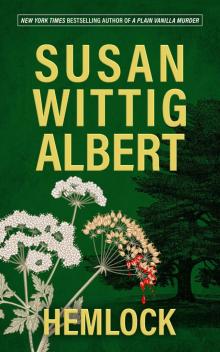 Hemlock
Hemlock Chile Death
Chile Death The Tale of Briar Bank
The Tale of Briar Bank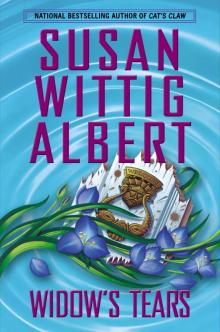 Widow's Tears
Widow's Tears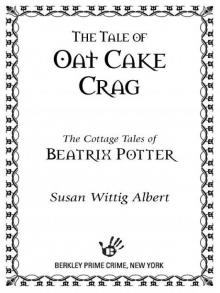 The Tale of Oat Cake Crag
The Tale of Oat Cake Crag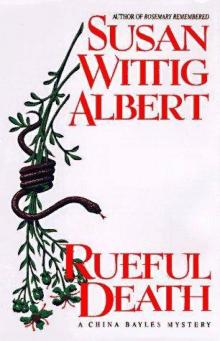 Rueful Death
Rueful Death Bittersweet
Bittersweet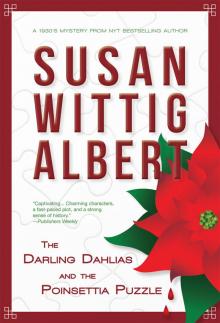 The Darling Dahlias and the Poinsettia Puzzle
The Darling Dahlias and the Poinsettia Puzzle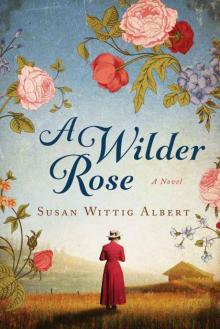 A Wilder Rose: A Novel
A Wilder Rose: A Novel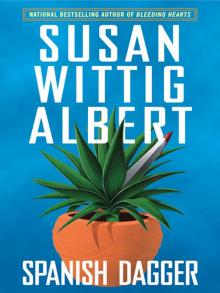 Spanish Dagger
Spanish Dagger The Darling Dahlias and the Texas Star
The Darling Dahlias and the Texas Star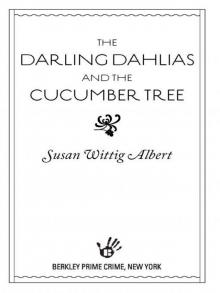 The Darling Dahlias and the Cucumber Tree
The Darling Dahlias and the Cucumber Tree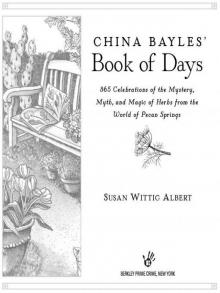 China Bayles' Book of Days
China Bayles' Book of Days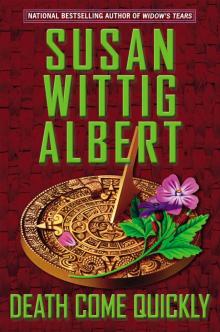 Death Come Quickly
Death Come Quickly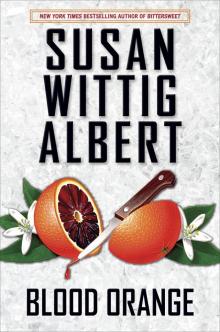 Blood Orange: A China Bayles Mystery
Blood Orange: A China Bayles Mystery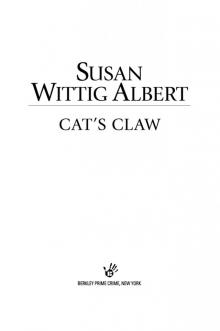 Cat's Claw
Cat's Claw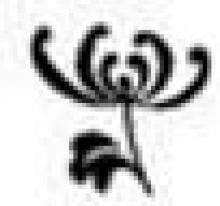 The Darling Dahlias and the Naked Ladies
The Darling Dahlias and the Naked Ladies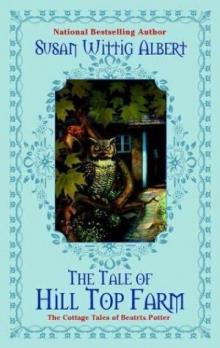 The Tale of Hill Top Farm
The Tale of Hill Top Farm The Darling Dahlias and the Confederate Rose
The Darling Dahlias and the Confederate Rose The Darling Dahlias and the Silver Dollar Bush
The Darling Dahlias and the Silver Dollar Bush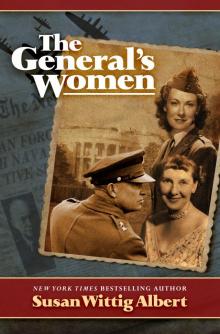 The General's Women
The General's Women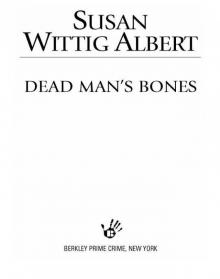 Dead Man's Bones
Dead Man's Bones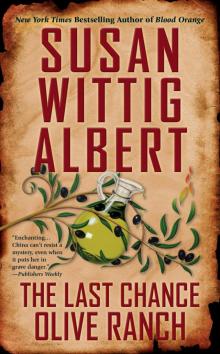 The Last Chance Olive Ranch
The Last Chance Olive Ranch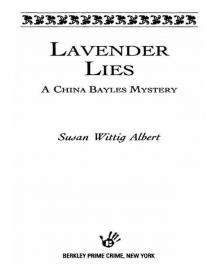 Lavender Lies
Lavender Lies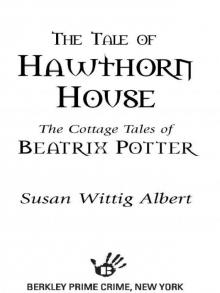 The Tale of Hawthorn House
The Tale of Hawthorn House The Tale of Castle Cottage
The Tale of Castle Cottage Rosemary Remembered - China Bayles 04
Rosemary Remembered - China Bayles 04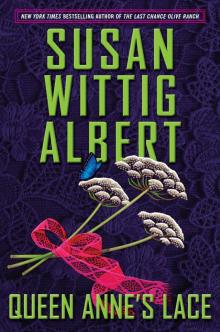 Queen Anne's Lace
Queen Anne's Lace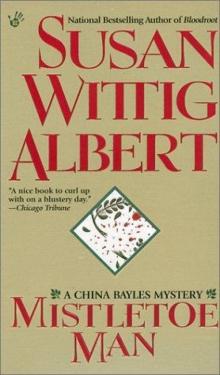 Mistletoe Man - China Bayles 09
Mistletoe Man - China Bayles 09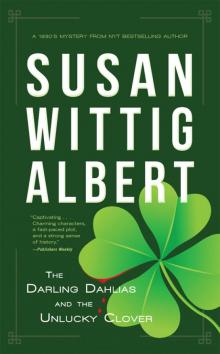 The Darling Dahlias and the Unlucky Clover
The Darling Dahlias and the Unlucky Clover Mourning Gloria
Mourning Gloria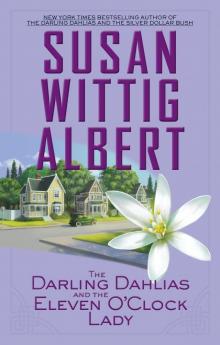 The Darling Dahlias and the Eleven O'Clock Lady
The Darling Dahlias and the Eleven O'Clock Lady